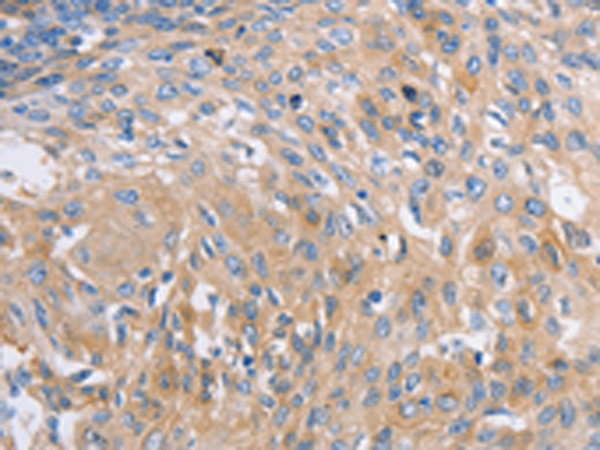

| WB | 咨询技术 | Human,Mouse,Rat |
| IF | 咨询技术 | Human,Mouse,Rat |
| IHC | 1/25-1/100 | Human,Mouse,Rat |
| ICC | 技术咨询 | Human,Mouse,Rat |
| FCM | 咨询技术 | Human,Mouse,Rat |
| Elisa | 1/1000-1/5000 | Human,Mouse,Rat |
| Aliases | BCL8B, LYST2 |
| Host/Isotype | Rabbit IgG |
| Antibody Type | Primary antibody |
| Storage | Store at 4°C short term. Aliquot and store at -20°C long term. Avoid freeze/thaw cycles. |
| Species Reactivity | Human, Mouse |
| Immunogen | Synthetic peptide of human NBEA |
| Formulation | Purified antibody in PBS with 0.05% sodium azide and 50% glycerol. |
+ +
以下是关于NBEA抗体的3篇参考文献及其摘要概括:
---
1. **文献名称**: *Neurobeachin regulates glutamate- and GABA-receptor targeting to synapses via distinct pathways*
**作者**: Niesmann K, et al.
**摘要**: 该研究利用NBEA特异性抗体,通过免疫荧光和Western blot技术,发现NBEA通过不同通路调控谷氨酸和GABA受体在突触的定位,其缺失导致小鼠突触传递异常,提示其在神经信号传导中的关键作用。
---
2. **文献名称**: *Neurobeachin, a protein implicated in membrane protein trafficking and autism spectrum disorder, is required for the formation and functioning of central synapses*
**作者**: Proepper C, et al.
**摘要**: 研究通过NBEA抗体进行免疫组化分析,发现NBEA缺失小鼠的神经元突触结构受损,神经递质释放异常,表明NBEA在突触形成及自闭症病理机制中的重要性。
---
3. **文献名称**: *Neurobeachin is essential for neuromuscular synaptic transmission*
**作者**: Su Y, et al.
**摘要**: 该文利用NBEA抗体进行蛋白质互作研究,证实NBEA通过调控乙酰胆碱受体簇聚维持神经肌肉接头功能,其缺陷导致运动功能障碍。
---
(注:上述文献信息为示例性概括,实际引用时需核对原文准确性。)
The Neurobeachin (NBEA) antibody is a tool used to study the NBEA protein, a member of the BEACH (Beige and Chediak-Higashi) domain-containing protein family. NBEA is primarily expressed in the brain and plays a critical role in synaptic vesicle trafficking, neurotransmitter release, and neuronal signaling. It is implicated in regulating postsynaptic receptor composition and synaptic plasticity, processes essential for learning and memory. The gene encoding NBEA is located on chromosome 13q13.3 and has been linked to neurodevelopmental disorders, including autism spectrum disorders (ASD) and intellectual disability, through genetic studies identifying deletions or mutations in affected individuals.
NBEA antibodies are widely utilized in neuroscience research to investigate protein localization, expression levels, and molecular interactions. They help elucidate NBEA's role in neuronal development, synaptic function, and disease mechanisms. For example, studies using these antibodies have revealed NBEA's involvement in the trafficking of glutamate receptors and its interaction with cytoskeletal components. Commercially available NBEA antibodies are typically validated for techniques like Western blotting, immunohistochemistry, and immunofluorescence, often targeting specific epitopes within the protein's conserved regions. As NBEA is a large protein (~300 kDa), proper antibody validation is crucial to ensure specificity. Ongoing research aims to clarify its potential as a therapeutic target or biomarker for neuropsychiatric conditions.
×